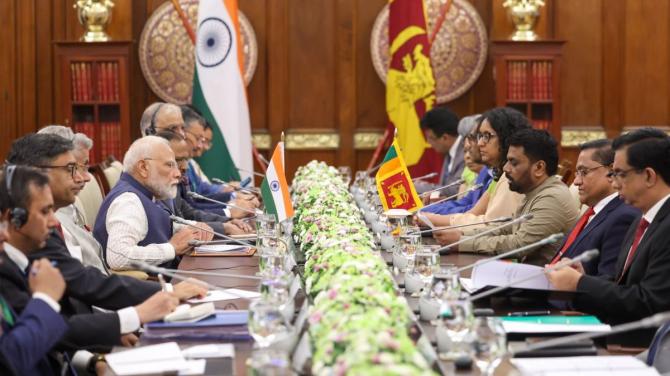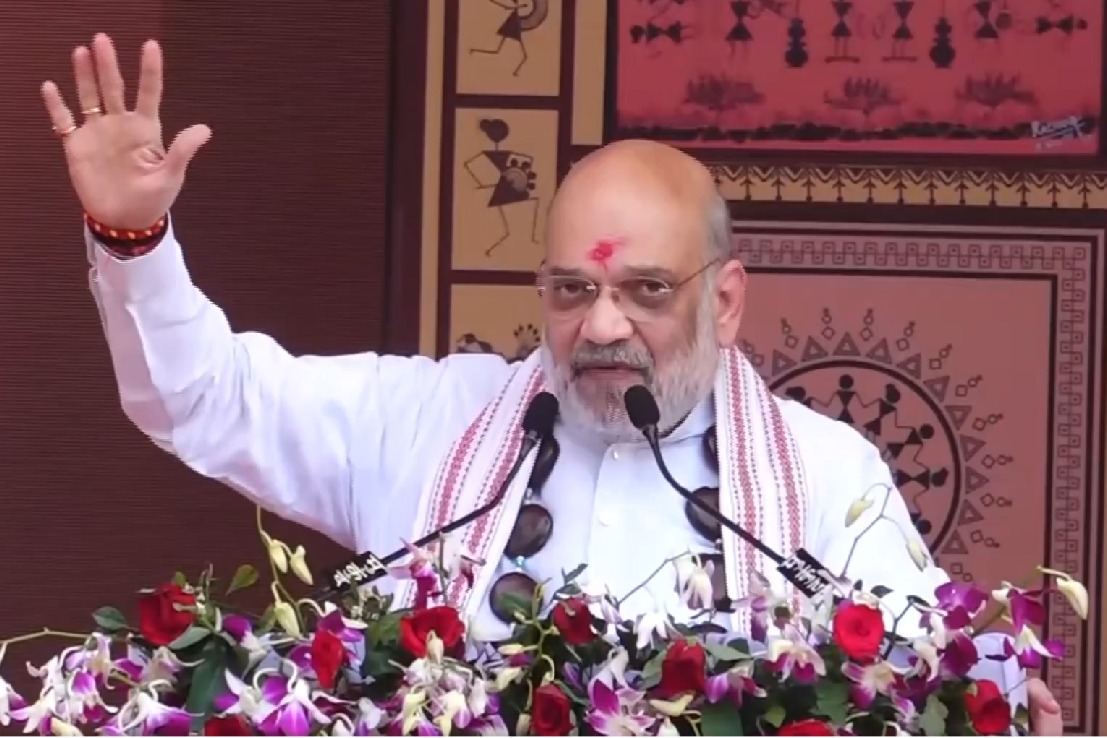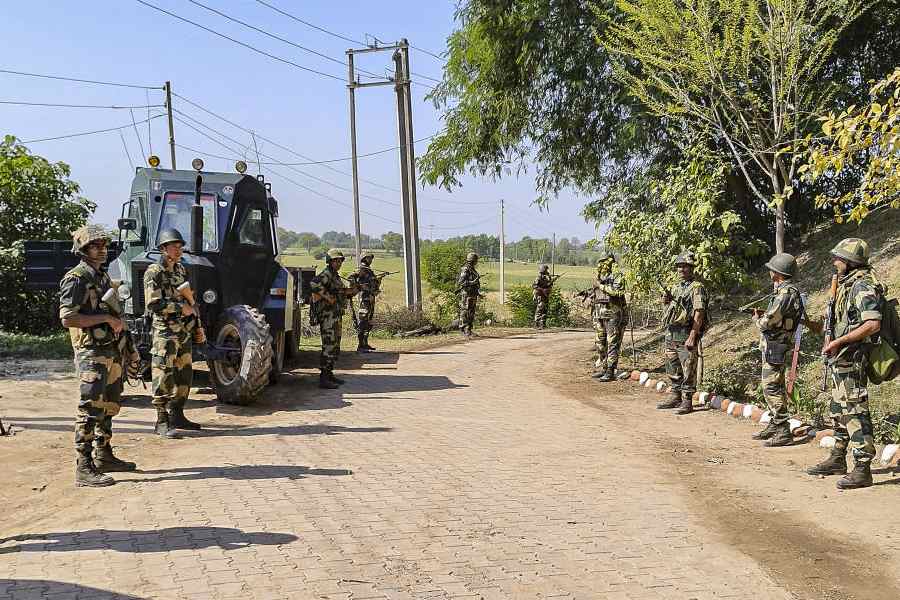SOURCE: IDRW.ORG


In a significant stride toward bolstering urban security, the Defence Research and Development Organisation (DRDO) is gearing up to deploy its indigenously developed D4 (Drone Detect, Deter, Destroy) counter-drone system at vital installations across India’s cities. Announced on March 27, 2025, this advanced solution is designed to counter the rising menace of rogue unmanned aerial vehicles (UAVs), offering a robust shield against potential drone attacks in densely populated areas.
The D4 system, a product of DRDO’s cutting-edge research, is an integrated counter-drone platform engineered to detect and neutralize rogue UAVs with precision. Capable of addressing both micro and small drones, it combines multiple technologies to ensure comprehensive protection. The system employs a “soft kill” mechanism to instantly detect and jam drone communications, disrupting their command-and-control links, and a “hard kill” laser-based mechanism to physically terminate targets at ranges of up to 3 kilometers. This dual approach makes D4 a versatile tool against the evolving threat of unauthorized drones.
Continue readingSOURCE: IDRW.ORG


The Indian Air Force’s (IAF) Air Force Station Naliya, located in the coastal town of Naliya in Gujarat, India, is set to become a key hub for India’s indigenous fighter jet program as it prepares to host the first squadron of the advanced Tejas Mk1A.
Situated approximately 90 kilometers from the strategically sensitive Sir Creek along the Pakistan border, this airbase has already seen the deployment of the older Tejas Mk1 jets in their Final Operational Clearance (FOC) configuration. Now, it is transitioning from its legacy MiG-21Bis fleet to the cutting-edge Tejas Mk1A, marking a significant step in the IAF’s modernization journey and India’s push for self-reliance in defense.
Continue readingSOURCE: AFI


India’s quest for self-reliance in defence manufacturing is on the cusp of a major milestone, according to Dr. Sameer V. Kamat, Chairman of the Defence Research and Development Organisation (DRDO). Speaking at a recent industry conclave in New Delhi, Dr. Kamat expressed optimism about the nation’s trajectory, stating, “I estimate that in the next 4–5 years, we will achieve around 90% self-reliance in defence production.” This ambitious projection underscores India’s rapid strides in reducing dependence on foreign arms, a shift driven by a mix of policy reforms, private-sector participation, and DRDO-led innovation.
Dr. Kamat’s remarks come at a time when India, one of the world’s largest arms importers, is aggressively pursuing its “Make in India” initiative to bolster indigenous defence capabilities. Over the past decade, the country has transitioned from relying heavily on imports—particularly from Russia, France, and the United States—to developing homegrown systems like the Tejas fighter jet, Arjun tank, and Pinaka rocket launchers. The DRDO chief’s 90% target reflects confidence in ongoing projects, including advanced missile systems, stealth warships, and next-generation drones, many of which are nearing operational deployment.
Continue readingSOURCE: AFI


The Indian Air Force (IAF) has faced a troubling year in 2025, with a series of jet crashes casting a harsh spotlight on its ageing fleet and maintenance practices. The latest incident, a Jaguar twin-seater crash near Jamnagar, Gujarat, on April 2, claimed the life of Flight Lieutenant Siddharth Yadav, marking the second Jaguar loss this year after a similar accident in Haryana in March.
These back-to-back crashes, alongside others involving MiG-21s and Mirage 2000s reported earlier in 2025, have raised alarm bells about the IAF’s ability to sustain its operational readiness. While many air forces worldwide continue to operate older aircraft, their crash rates remain notably lower, prompting questions about the IAF’s maintenance department and its oversight mechanisms. Past Comptroller and Auditor General (CAG) reports on Indian crashes offer critical insights into systemic issues that may still persist, urging a thorough relook at how the IAF maintains its fleet.
Continue readingSOURCE: AFI

Chandrapur, a town near Guwahati in Assam, is set to become a pivotal hub for India’s space ambitions as the Indian Space Research Organisation (ISRO) establishes the country’s first space debris monitoring radar under Project Netra (Network for Space Object Tracking and Analysis). This groundbreaking initiative, announced on April 3, 2025, marks a significant step toward enhancing India’s space situational awareness (SSA) and safeguarding its growing fleet of satellites from the increasing threat of space debris.
Project Netra involves the creation of a comprehensive network of observational facilities, including optical telescopes, radars, and a centralized command center. The radar system in Chandrapur, to be set up on a 200-bigha plot of land at the site of a defunct thermal power plant, will be capable of detecting objects as small as 10 cm in radius at distances up to 2,000 km. This capability will allow ISRO to track space debris in low-earth orbits (LEO), where most of India’s remote-sensing satellites operate, as well as monitor potential threats to assets in higher orbits. ISRO aims to make at least one radar operational within this year, with the full Chandrapur system expected to be commissioned within four years, by 2029.
Continue readingSOURCE: AFI


As India charts its course toward developing a sixth-generation fighter jet under the Advanced Medium Combat Aircraft (AMCA) program, the strategic imperatives of its northern frontier—particularly the People’s Liberation Army Air Force (PLAAF) airbases in the Tibetan Plateau—demand a bold rethink of the platform’s design. To effectively counter China’s growing military presence and execute deep-strike missions against heavily defended targets, India’s next-gen fighter must evolve into a fighter-bomber with a Maximum Take-Off Weight (MTOW) of around 50 tons. This requirement stems from the need for enhanced payload, range, and survivability, critical for penetrating the PLAAF’s air defense network and neutralizing high-value assets deep inside contested territory.
The Tibetan Plateau, often called the “Roof of the World,” hosts several key PLAAF airbases, such as Hotan, Ngari Gunsa, and Lhasa Gonggar, located between 1,500 and 3,000 kilometers from India’s northern borders. These bases, situated at altitudes exceeding 4,000 meters, serve as launchpads for fighter jets like the J-20 and J-16, as well as bombers like the H-6K, capable of striking Indian targets with standoff weapons. The PLAAF’s deployment in Tibet has grown steadily, bolstered by advanced radar systems, surface-to-air missiles (SAMs) like the HQ-9, and an integrated air defense network extending into Xinjiang and beyond. Neutralizing these airbases is vital to disrupt China’s ability to project air power over the Line of Actual Control (LAC) during a conflict.
Continue readingSOURCE: AFI


on X),
India has announced a missile test in the Bay of Bengal, with a designated no-fly zone in effect from April 12 to April 14, 2025, as part of its ongoing efforts to bolster its strategic defense capabilities. The advisory, issued by the Indian Navy’s Eastern Naval Command in Visakhapatnam, covers a 1,245 km-long corridor stretching from Abdul Kalam Island off the Odisha coast to the Andaman and Nicobar Islands, under the purview of the Indian Tri-Service Theatre Command. The test underscores India’s commitment to advancing its missile technology amid growing regional security concerns.
According to the notice, the no-fly zone will be active daily from 0400 UTC to 0430 UTC (9:30 AM to 10:00 AM IST) on April 12, 13, and 14, 2025. The restricted area spans a significant portion of the Bay of Bengal, ensuring safety for maritime and air traffic during the test window. Abdul Kalam Island, formerly known as Wheeler Island, is a key launch site for India’s missile tests, hosting facilities for the Defence Research and Development Organisation (DRDO). The island has been the launchpad for major systems like the Agni series of ballistic missiles and the BrahMos supersonic cruise missile.
Continue readingSOURCE: PTI


Defence Minister Rajnath Singh on Saturday inaugurated various infra projects at Karwar naval base in Karnataka. The Union minister arrived at the naval base around 1 pm where he was given a Guard of Honour at the Parade Ground. The defence minister landed at the key base in a military chopper, and is scheduled to spend a few hours here, with a number of engagements lined up.
The Navy is expanding the crucial naval base as part of Project ‘Seabird’.
Continue readingSOURCE: PTI


ISRO on Friday said the fourth edition of the PSLV Orbital platform Experiment Module (POEM-4), the repurposed spent upper stage of the Polar Satellite Launch Vehicle used for the space docking experiment mission, has re-entered the Earth’s atmosphere.
“Finally, the POEM-4 module re-entered the atmosphere and impacted at 02:33 UTC (08:03 IST), April 04, 2025, in the Indian Ocean,” ISRO said in a post on ‘X’.
Continue readingSOURCE:


For the first time, India and Sri Lanka on Saturday inked an ambitious defence cooperation pact with Prime Minister Narendra Modi outlining a broader roadmap for deeper bilateral cooperation, asserting that security of both nations is interlinked and dependent on each other.
The defence pact is among seven key agreements signed by the two sides following wide-ranging talks between Modi and Sri Lankan President Anura Kumara Dissanayake.
Continue readingSOURCE: IANS


Aerospace startup Sarla Aviation. which recently unveiled the country’s first flying taxi prototype called ‘Shunya’ earlier this year, is aiming to soon start commercial operations. Speaking to IANS, Adrian, co-founder and CEO of Sarla Aviation, said that bringing air taxis to India is one of their important goals under the ‘Viksit Bharat’ initiative.
“India needs a better transport system. This is where the idea of air taxis come into the picture. It can be expected to become an important part of public transport in the future,” said Adrian. Adrian further stated that it is necessary to bring air taxis to India so that problems like traffic jams can be eliminated.
Continue readingSOURCE: IANS


Union Home Minister Amit Shah on Saturday extended a heartfelt appeal to those involved in Maoist activities to lay down arms and walk the path of peace and development.
The Home Minister, who was visiting Chhattisgarh’s Bastar to participate in the “Bastar Pandum festival” and to review the anti-Maoist initiatives launched by the Union government with an ambitious goal of a Maoist-free India by 2026, stressed the importance of reintegrating into the mainstream and contributing to the developmental strides being made under the leadership of Prime Minister Narendra Modi.
Continue readingSOURCE: PTI


Prime Minister Narendra Modi was on Saturday accorded a grand ceremonial welcome at the historic Independence Square in the heart of the Sri Lankan capital, in perhaps the first such honour given to a foreign leader.
The prime minister was received at the Square by President Anura Kumara Dissanayake. PM Modi landed in Colombo last evening after concluding his trip to Bangkok where he attended a summit of the BIMSTEC (Bay of Bengal Initiative for Multi-Sectoral Technical and Economic Cooperation).
Continue readingSOURCE: PTI


A Pakistani intruder was shot dead along the International Border here, a BSF spokesperson said on Saturday, claiming that the force foiled an infiltration attempt from across the border.
The Border Security Force (BSF) lodged a strong protest with the Pakistan Rangers following the incident in the border outpost Abdullian area in the R S Pura sector, official sources said.”On the intervening night of April 4 and 5, the alert BSF troops saw suspicious movement in the Jammu border area and an intruder was seen crossing the IB,” the spokesperson said.
Continue readingSOURCE: PTI


The Centre today held a meeting with representatives of Manipur’s warring Meitei and Kuki communities in an effort to bring lasting peace in the state. Sources said the meeting was aimed at enhancing trust and cooperation between the Meiteis and Kukis and finding a roadmap to restore peace and normalcy in Manipur.
The discussions stressed on maintaining law and order and facilitating reconciliation between the two communities, they said.
Continue reading